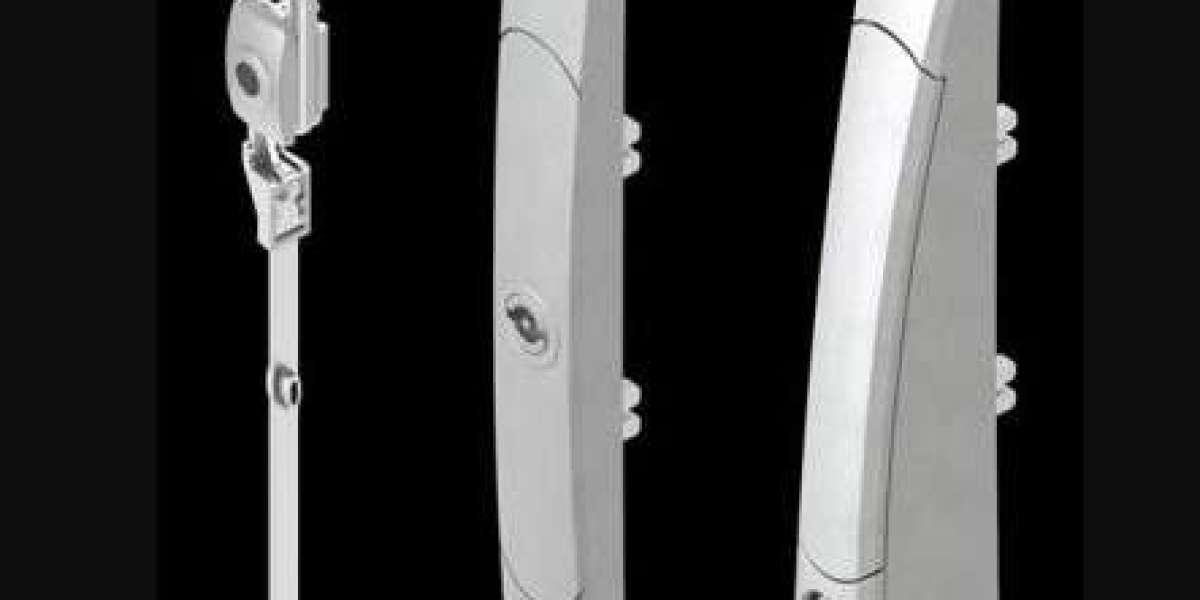Rod Control Lock: Function, Importance, and Applications
In the world of mechanical systems, safety and precision are essential. Whether it's heavy machinery, hydraulic equipment, industrial tools, or construction vehicles, the ability to control the movement of mechanical parts is critical. One such component that ensures controlled and secure movement is the Rod Control Lock.
A rod control lock is a mechanical or hydraulic device designed to secure, position, or limit the motion of a rod or piston in systems such as hydraulic cylinders, actuators, or mechanical linkages. These locks play a vital role in safety, accuracy, and performance across multiple industries.
This article explores what a rod control lock is, how it works, its applications, types, and benefits.
What is a Rod Control Lock?
A Rod Control Lock is a mechanical or hydraulic mechanism that restricts or locks the motion of a rod or shaft, either in a fixed position or over a controlled range. It's used to prevent unintended movement, hold position under load, or provide security during maintenance or failure conditions.
Rod locks are typically found in systems with linear actuators or hydraulic/pneumatic cylinders, where controlling the extension or retraction of a rod is crucial. They may be manual, spring-loaded, or automatically engaged/disengaged using hydraulic pressure, air pressure, or electric signals.
How Does a Rod Control Lock Work?
Rod locks operate based on different mechanisms, depending on the type of system. The most common methods include:
1. Friction-Based Locking
Friction is applied to the rod by internal clamps or plates. When the lock is engaged, the rod cannot move. When disengaged, the friction is released, and the rod can move freely.
2. Mechanical Pin or Wedge Systems
These locks use mechanical pins, detents, or wedges that physically block the movement of the rod. These systems are usually manually operated and provide a solid mechanical stop.
3. Hydraulic or Pneumatic Locks
Often integrated into cylinder systems, these locks engage or release based on pressure. For instance, a spring might lock the rod by default, and hydraulic pressure would release it during normal operation.
4. Fail-Safe Design
Many rod control locks are designed to lock automatically in the event of pressure loss, power failure, or emergency, providing safety for operators and equipment.
Common Applications of Rod Control Locks
Rod control locks are used across various industries and machines where precision, stability, and safety are essential. Some common applications include:
1. Hydraulic Cylinders
In heavy equipment, a rod lock ensures the cylinder holds its position when the system is shut off or under variable load, such as in cranes, lifts, or excavators.
2. Industrial Machinery
In assembly lines or presses, rod locks maintain tool position or prevent unintentional motion during maintenance.
3. Medical and Laboratory Equipment
Some surgical tools or testing devices use rod locks for exact positioning and secure operation.
4. Aerospace and Automotive Testing
Rod locks are used in test rigs to control or freeze movement during stress testing or calibration.
5. Robotics and Automation
In robotic arms or automated linear actuators, rod control locks help maintain exact positions during idle periods or shutdowns.
Types of Rod Control Locks
Rod locks vary in design, size, and mechanism. Here are some common types:
1. Spring-Applied, Pressure-Released (Fail-Safe) Rod Locks
Default position: Locked
Releases only under hydraulic or pneumatic pressure
Ideal for safety-critical systems
2. Manual Mechanical Locks
Manually operated using handles or levers
Suitable for static applications or temporary locking
3. Electric Rod Locks
Engage or release with an electric signal
Integrated into smart systems or automation platforms
4. Integrated Cylinder Locks
Built into the cylinder body itself
Compact and efficient for space-constrained systems
Key Benefits of Rod Control Locks
Rod control locks provide several advantages, including:
1. Enhanced Safety
Locks prevent accidental movement of heavy loads, reducing the risk of injury during equipment operation or maintenance.
2. Position Holding
Maintain a precise position without relying on continuous hydraulic or air pressure—essential in applications requiring stability.
3. Energy Savings
Once locked, there's no need to keep the system pressurized, saving energy and reducing wear on pumps and compressors.
4. Failsafe Operation
In systems where motion control is critical, a rod lock ensures that movement stops immediately if there's a loss of power or pressure.
5. Improved Equipment Life
By stabilizing motion and preventing shock loads, rod locks help reduce mechanical stress and extend equipment life.
Factors to Consider When Choosing a Rod Control Lock
When selecting a rod lock for a system, the following factors should be considered:
Rod Diameter Compatibility: Ensure the lock matches the rod size for proper engagement.
Load Holding Capacity: The lock must be capable of withstanding the maximum expected load.
Actuation Method: Choose between manual, hydraulic, pneumatic, or electric based on the application.
Environment: Consider exposure to moisture, dust, temperature extremes, or corrosive substances.
Fail-Safe Requirements: For safety-critical systems, opt for locks that automatically engage during power loss.
Maintenance and Safety Tips
Regular Inspection: Check for wear, corrosion, or damage to the locking mechanism.
Lubrication: Some locks require periodic lubrication to function smoothly.
Function Testing: Periodically test the lock's ability to engage and release under load.
Manufacturer Guidelines: Always follow operational and maintenance instructions to ensure safety and reliability.
Conclusion
Rod control locks may be small components, but they play a huge role in safety, precision, and operational control. From holding the boom of a crane in place to ensuring an actuator stays perfectly still in a robotic system, these locks bring dependability to dynamic machines. As industries push for more automation, safety, and efficiency, the use of advanced rod control locks will only grow.
Choosing the right lock for your system ensures not only optimal performance but also peace of mind in demanding applications.














